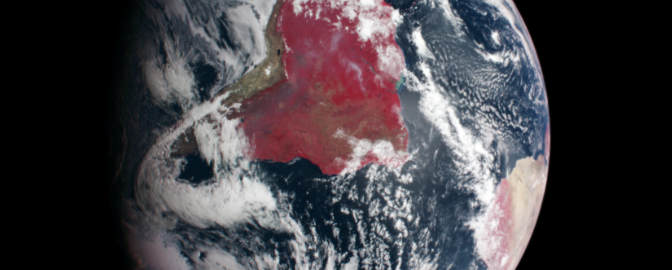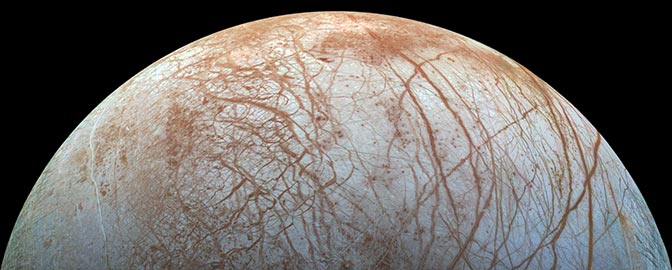Mars Odyssey (ODY)

Mission Overview
The 2001 Mars Odyssey is the remaining part of the Mars Surveyor 2001 Project, which originally consisted of two separately launched missions, The Mars Surveyor 2001 Orbiter and the Mars Surveyor 2001 Lander. The lander spacecraft was cancelled as part of the reorganization of the Mars Exploration Program at NASA. The orbiter, renamed the 2001 Mars Odyssey, will nominally orbit Mars for three years, with the objective of conducting a detailed mineralogical analysis of the planet's surface from orbit and measuring the radiation environment. The mission has as its primary science goals to gather data to help determine whether the environment on Mars was ever conducive to life, to characterize the climate and geology of Mars, and to study potential radiation hazards to possible future astronaut missions. The orbiter will also act as a communications relay for future missions to Mars over a period of five years.
Spacecraft and Subsystems
The main body of the 2001 Mars Odyssey is box-shaped, 2.2 meters x 1.7 meters x 2.6 meters. The spacecraft has a launch mass of 725.0 kg, including 348.7 kg of fuel. The orbiter is divided into two modules, the upper equipment module holds the equipment deck which supports the engineering components and the science instruments. Above the equipment module, connected by struts, is the science deck, holding the star cameras, high energy neutron detector, UHF antenna, the THEMIS instrument and a deployable 6 meter boom holding the gamma sensor head for the GRS. A set of solar array panels extends out from one side of the main bus. A parabolic high-gain dish antenna is mounted on a mast extending from one corner of the bottom of the bus. The MARIE instrument is mounted inside the spacecraft. The lower part of the bus is the propulsion module. The main engine, a hydrazine and nitrogen tetroxide rocket which can produce 65.3 kg thrust, is mounted in the bottom part of the propulsion module, along with the fuel, oxidizer and helium pressurization tanks.
Attitude control is provided by four 0.1 kg thrusters and the spacecraft can be turned using four 2.3 kg thrusters. The spacecraft is three-axis stabilized using three primary reaction wheels and one backup. Navigation is provided by a Sun sensor, star camera, and inertial measurement unit. Power is provided by the gallium arsenide solar cells in the solar panel and a 16 amp-hr nickel hydrogen battery. Communications between the orbiter and Earth are in X-band via the high-gain antenna and communications between the orbiter and any Mars landers are via the UHF antenna. Thermal control is achieved using a system of heaters, radiators, louvers, insulating blankets and thermal paint. Command and data handling is through a RAD6000 computer with 128 Mbytes RAM and 3 Mbytes of non-volatile memory.
The 2001 Mars Odyssey carries star cameras, the Mars Radiation Environment Experiment (MARIE), which measures the near-space radiation environment as related to the radiation-related risk to human explorers, the Thermal Emission Imaging System (THEMIS), which maps the mineralogy of the martian surface using a high-resolution camera and a thermal infrared imaging spectrometer, and the Gamma-Ray Spectrometer (GRS), which maps the elemental composition of the surface and determines the abundance of hydrogen in the shallow subsurface.
Mission Profile
The 2001 Mars Odyssey launched on 7 April 2001 at 15:02:22 UT (11:02:22 a.m. EDT). During the cruise to Mars, in August, the MARIE instrument failed to respond during a routine data transfer and was put into hibernation. Attempts to revive the instrument were successful in March 2002 and MARIE began taking scientific data from orbit on 13 March. The star tracker camera is having difficulties with too much stray light, it is thought that this will not affect its operation severely. After a seven month cruise the spacecraft reached Mars on 24 October 2001 at 02:26 UT (23 October 10:26 p.m. EDT). The spacecraft used a 19.7 minute main-engine propulsive maneuver to transfer into an 18.6 hour elliptical capture orbit and used aerobraking until 11 January 2002, when the spacecraft pulled out of the aerobraking orbit into a 201 x 500 km orbit. This orbit was trimmed over the next few weeks until it became a 2-hour, approximately 400 x 400 km polar science orbit on January 30, 2002. The Orbiter will act as a communications relay for the Mars Exploration Rovers, which arrived in January 2004, and possibly other future missions. Data was collected from orbit until the end of the 917 day nominal mission in July 2004. The mission has been extended multiple times and, as of December 2022, continues to operate.
Note: Mission information is from NASA's Space Science Data Coordinated Archive.
Spending Summary
| FY 2024 Total | By Jul of FY 2024 | By Jul of FY 2025 | Change from FY 2024 | |
|---|---|---|---|---|
| Obligations | $10.3M | $10.3M | $10.9M | +$0.6M |
| Outlays | $11.0M | $4.0M | $9.0M | +$5.0M |
Comparing Contract Obligations

Running sum of 1 award. Shows cumulative actual spending by fiscal period. Period 2 represents combined Oct-Nov data (this is a reporting quirk of USASpending.gov). Negative values indicate adjustments or credits. Data last updated: 2025-09-18
Download OptionsWhat are obligations? Obligations represent NASA's legal commitments to spend money — contracts signed, grants awarded, and purchase orders issued. Unlike outlays (actual payments), obligations show when spending decisions are made.
Reading this chart: The chart displays cumulative obligations throughout the fiscal year (October through September). The solid line shows the current fiscal year's running total, while the dotted line (when available) shows the previous year for comparison. This allows you to see spending patterns and track whether funding is ahead or behind the prior year's pace.
Comparing Contract Outlays

Running sum of 1 award. Shows cumulative actual spending by fiscal period. Period 2 represents combined Oct-Nov data (this is a reporting quirk of USASpending.gov). Negative values indicate adjustments or credits. Data last updated: 2025-09-18
Download OptionsWhat are outlays? Outlays represent actual cash payments made by NASA. While obligations show when spending decisions are made, outlays show when money actually leaves the treasury.
Reading this chart: The chart displays cumulative outlays throughout the fiscal year (October through September). The solid line shows the current fiscal year's actual spending, while the dotted line (when available) shows the previous year for comparison. This reveals the actual cash flow timing and whether spending is keeping pace with the prior year.


 Explore Worlds
Explore Worlds Find Life
Find Life Defend Earth
Defend Earth

